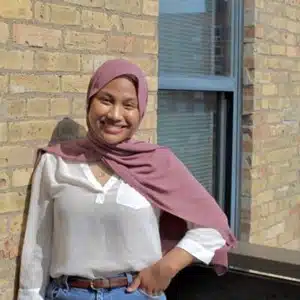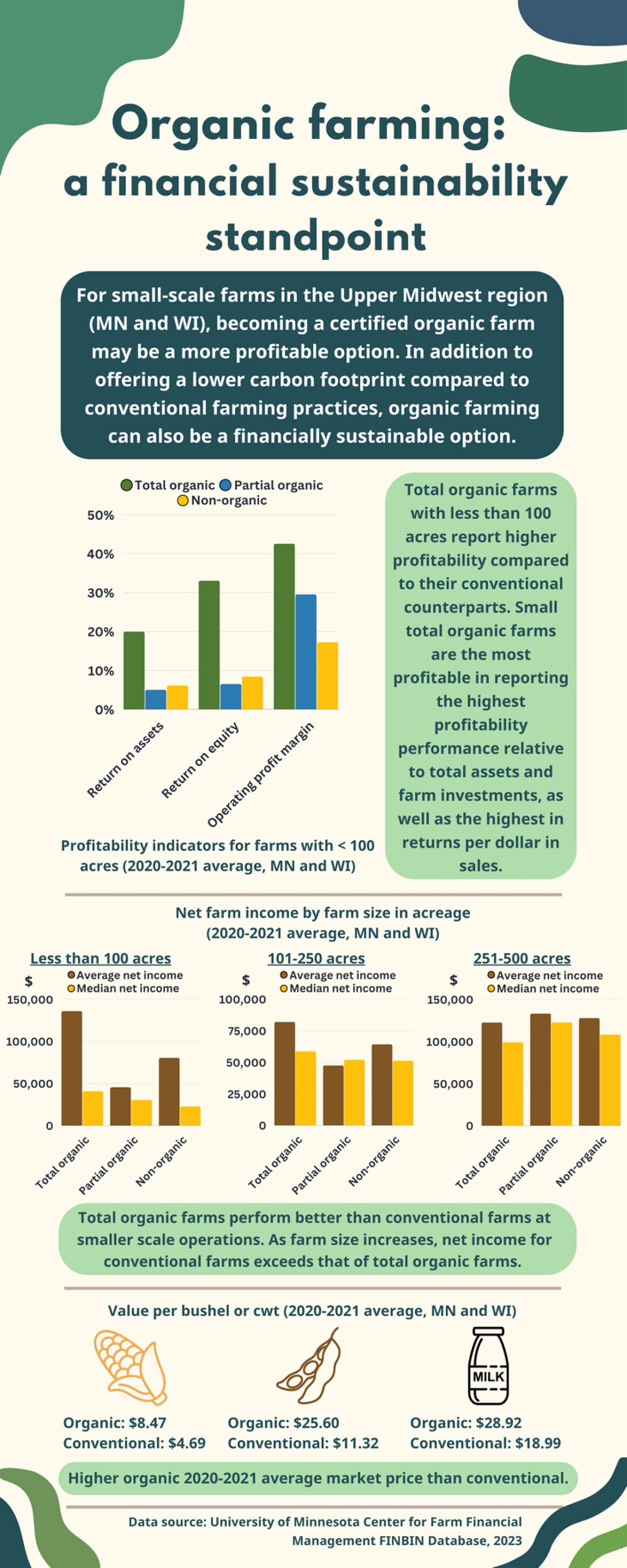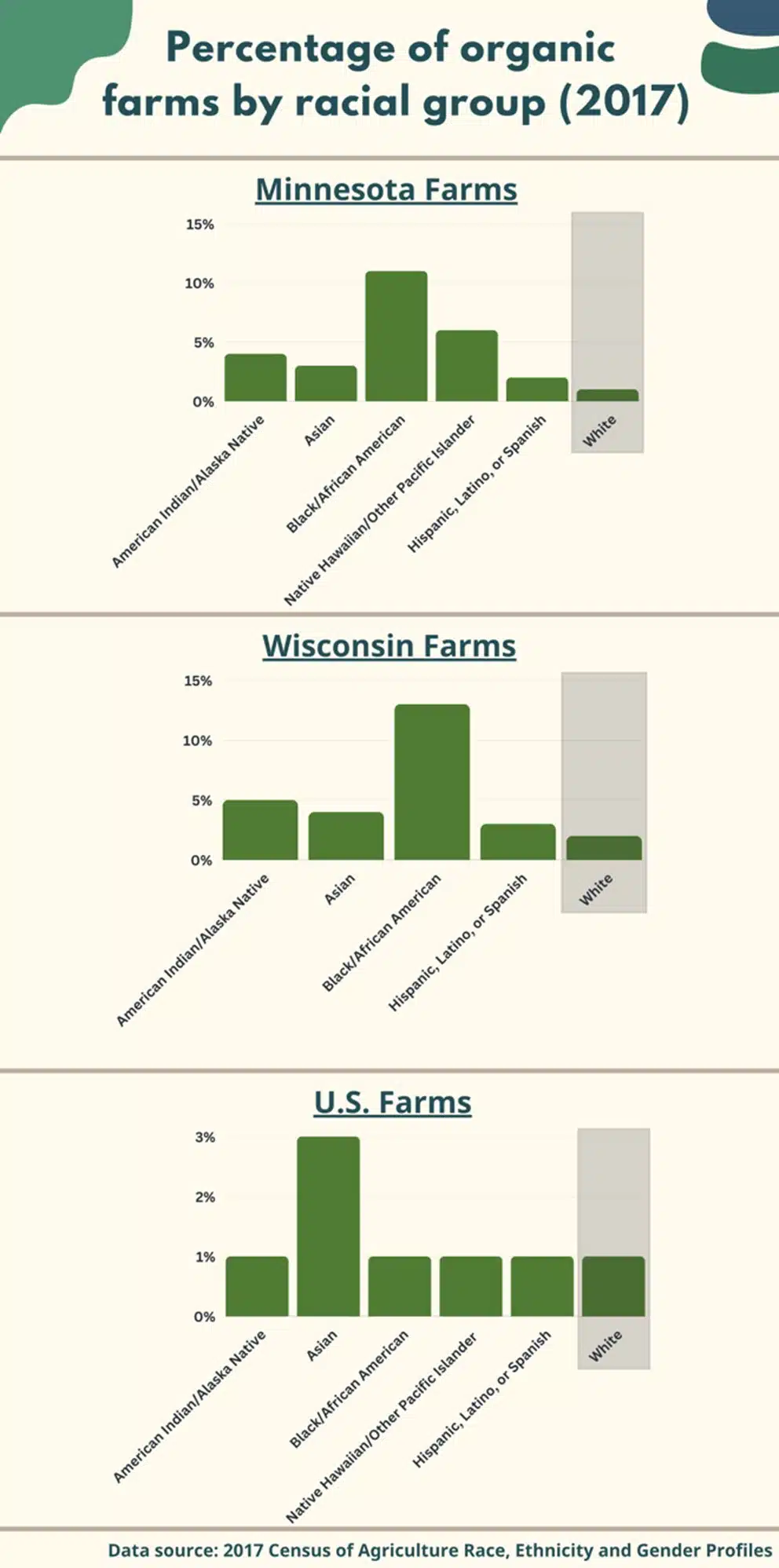The Economics of Sustainable Growing Practices by Nurfadila Khairunnisa
This guest blog is published as part of the 2022-2023 “Equipping Next Gen Ag and Conservation Leaders” mentorship program hosted by the Mississippi River Network and Green Lands Blue Waters. See all twelve communications projects completed by the mentees here. You can read more about the entire program at https://greenlandsbluewaters.org/next-gen-ag-leaders/
Nurfadila Khairunnisa, Applied Economics Master’s student at University of Minnesota (MN)
Nurfadila completed her second year in the Applied Econ program and works on projects looking at the effect of fresh fruit and vegetable consumption among an ethnic community in rural MN and creating financial benchmarking reports for organic farms in the upper Midwest. Nurfadila’s primary interest is in work that supports low-income and underserved communities along the supply chain, including underserved Somali grocery stores in rural Minnesota. Originally from Indonesia but raised in Minneapolis, she brings a deep understanding of the value of culturally appropriate food availability and the importance of including underrepresented groups in the food supply narrative. She envisions an agricultural system that feeds everyone, but that is also truly accessible to everyone.
Nurfadila’s Final Communications Project: Nurfadila Khairunnisa created two infographics to complement a short blog post about the the economics of sustainable growing practices.
Join our
COMMUNITY
And Get a Free E-book!
When you sign up as a River Citizen you’ll receive our newsletters and updates, which offer events, activities, and actions you can take to help protect the Mississippi River.
You’ll also get our free e-book, Scenes From Our Mighty Mississippi, an inspiring collection of images featuring the River.
Organic farming practices in the Upper Midwest states, Minnesota and Wisconsin, can be a more economically viable option in smaller-sized operations. Using 2020-2021 average data from the Center for Farm Financial Management’s FINBIN database (finbin.umn.edu), we compare total, partial, and non-organic farm financial data. Total organic farms report the highest profits relative to total farm assets (return on assets) and total farm investments (return on equity) compared to both partial and non-organic operations. However, partial organic farms report slightly lower profits relative to both farm assets and investments compared to non-organic operations. Overall, total and partial organic farms report the highest returns for every dollar in farm sales compared to conventional operations.
When comparing net farm income as a measure of farm profitability, average and median net farm income is the highest for total organic farms that operate on less than 250 acres. For the farm size category with 251-500 acres, there is little difference in the net farm income for all of the operation types but the average and median net farm income for total organic farms fall below that of partial organic and conventional farms. Meanwhile, partial organic farms operating on less than 250 acres report the lowest average net farm income but the highest when operating on 251-500 acres.
Overall, organic outputs (corn, soybean, and dairy) report higher market prices compared to conventional products when comparing 2020-2021 value averages. Organic corn reported $3.71 per bushel in price endowments while organic soybean growers received over $14.24 per bushel in price endowments in 2020 and 2021. Lastly, organic dairy received $9.92 per cwt in price bonuses in those two years.
The 2017 Census of Agriculture reports that nationwide, Asian farmers have the highest percentage of organic producers within their racial group. Meanwhile, Minnesota and Wisconsin data report that Black farmers have the highest percentage of organic producers compared to other racial groups, followed by Native Hawaiian/Pacific Islander and American Indian farmers. Therefore, work related to Upper Midwest organic farms should be heavily tailored to support Black and Indigenous farmers while also encouraging organic farming towards other racial groups.
Step 1
Become a River Citizen
Yes! The River can count on me!
I am committed to protecting the Mississippi River. Please keep me informed about actions I can take to protect the Mississippi River as a River Citizen, and send me my free e-book!, Scenes From Our Mighty Mississippi!
Step 2
LEARN ABOUT THE RIVER
We protect what we know and love. As a River Citizen, you’ll receive our email newsletter and updates, which offer countless ways to engage with and learn more about the River. You can also follow us on Instagram, Facebook, X (Twitter) , and YouTube, where we share about urgent issues facing the River, such as nutrient pollution, the importance of floodplains and wetlands, and bedrock legislation such as Farm Bill Conservation Programs.
Step 3
Take Action
There are many ways you can jump in and take action for a healthy Mississippi River. Our 10 actions list includes simple steps you can take at any time and wherever you are. Check out our action center for current action alerts, bigger projects we are working on, and ways to get involved.



